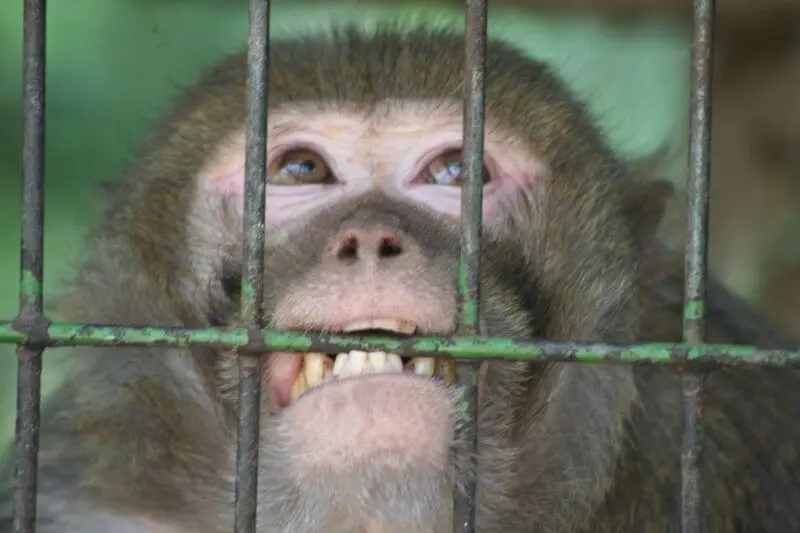From nature to the cage: How's the animal traffic in Brazil
In Brazil, about 38 million animals are trafficked from nature annually, accelerating the disappearance of about 1,173 species of wild animals at risk of extinction. To smuggle animals from one state to another or even to another country, it is necessary to hide them in suitcases, hidden compartments in the trunk or in seat linings, so it is estimated that for every ten animals captured, only one survives. In other words, most of them die during transport or after reaching their destination, due to psychological or physical trauma. Still, about 4 million are sold each year.
The main target of animal traffic and illegal trade are birds such as parrots and macaws, representing more than 80% of all captured animals. This birds are among the most endangered species and because of this, their market value is very high, since the rarer and more vulnerable the animal, the more expensive it is. In Brazil, the only way of buy an exotic animal is with the legal authorization of the environment institute IBAMA, but, due to high prices and lack knowledge of the law, most of people appeal to traffic.
One of most smuggled species to paticular zoos around the entire world is the Hyacinth Macaw (Anodorhynchus hyacinthinus) being sale principally to North America, Europe and Asia.
In Amazonia, many ornamental fish are also taken for home aquariums, such as Cochu’s blue tetra and Cardinal tetra. The Arapaima , one of the largest freshwater fishes in the world, is also a target, its mixed with other fishes that can be bred in captivity and sent to the USA in large quantities.
This, and another fishes are sale to be consumed as luxury food, likewise some turtles and its eggs, peccaries, tapirs and another mammals are sold in Brazil as bushmeat (only the hunt of the European board its allowed in Brazil). In China, jaguars are highly prized for their teeth, skins, and heads used in traditional medicine (even though they have no proven effectiveness) or as decorative items.

Currently, in Brazil, the only way to obtain a wild animal is to go to one of the 523 commercial establishments or breeding grounds in the country that have Ibama authorization. However, a study conducted by the federal agency in 2018 proved that some of these establishments keep puppies that come from the wild and not from captive breeding.
After a search in the Ibama system, where breeders add information about their animals in captivity (with data collected during inspections), it was proven that 80% of the animal’s rings are incompatible with the birth dates of the offspring. In other words, 80% of the puppies declared in the system are animals captured in the wild.
Despite all these data, they do not show what is being trafficked, but rather what is being discovered. The 30 thousand animals confiscated per year in the State of São Paulo (the average of the last 10-15 years), are only the live animals, therefore 10% of what was captured illegally.
Can I regularize my exotic animal?
No. If you have a non-legalized animal, the best solution is to give it to the institutions that receive and treat wild animals. This procedure prevents the person from being penalized for having an illegal animal. To do this, you can contact the Environmental Police, Ibama, CETAS or CRAS.
Upon arrival, the physical and behavioral condition of the animal will be evaluated and then its destination will be determined. These animals need a lot of time for rehabilitation and even with all the care and process, some are never able to return to their habitats, either because they no longer exist due to fires, deforestation and loss of ecosystems, or because they are no longer able to adapt to wild life without human help. In these cases, the animals are sent to zoos or captive breeding facilities.
However, according to CETAS reports, more than 50% of the animals are returned to the wild.
The worst choice that owners can make is to release the animal on their own. The reintegration of an animal that has spent a long time in captivity is very complicated; in addition to the analysis, it is necessary to go through a reintroduction process. In addition to the risk of death, there is also the risk of introducing invasive species into the environment, causing an imbalance in the ecosystem and leading to the extinction of other animals.
If you suspect animal trafficking, you should contact IBAMA’s Green Line on 0800 61 8080. If you have witnessed the trafficking, it is important to record as much information as possible, such as the location of the action, the license plates of the vehicles involved, the characteristics of the people buying and selling, which animals, among other information.
If you see an exotic or wild animal in danger or lost, you should contact the appropriate authorities so that the capture and rescue can be carried out properly. Never attempt to rescue the animal yourself.
Read more:
Veja - A caça ao caçador: o tráfico de animais no Brasil
Mongabay - As redes de tráfico que estão acelerando a extinção na Amazônia
O Eco - Relatório aponta Amazônia como epicento do tráfico de animais silvestres no Brasil
Toda Matéria - Tráfico de animais
EcoDebate - Como fazer a entrega voluntária de animal silvestre
